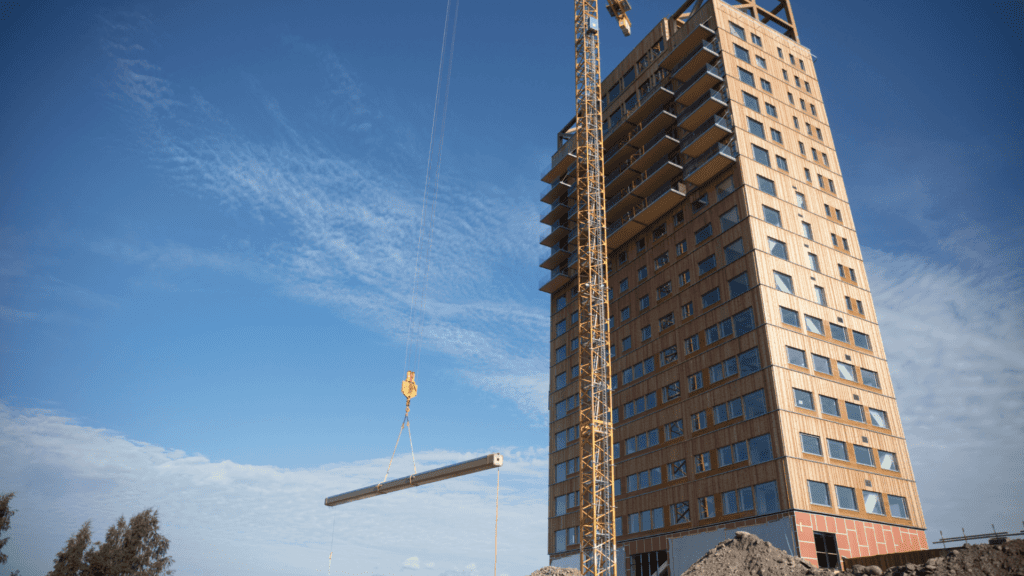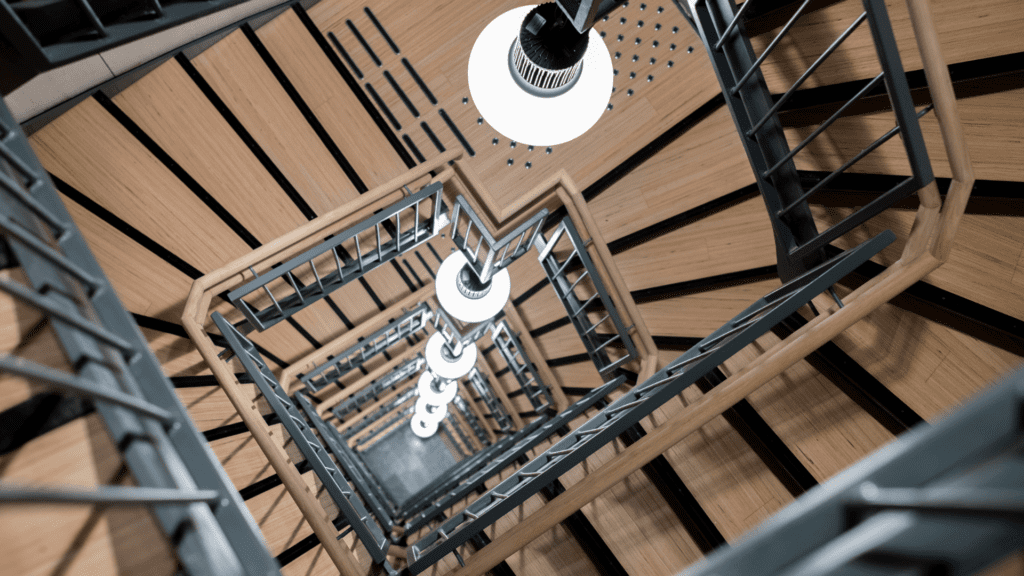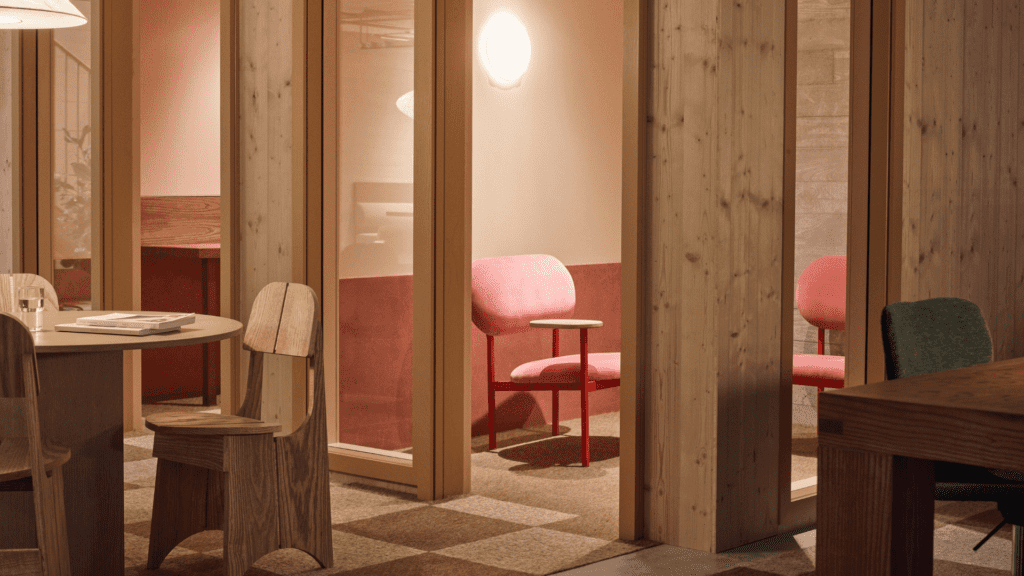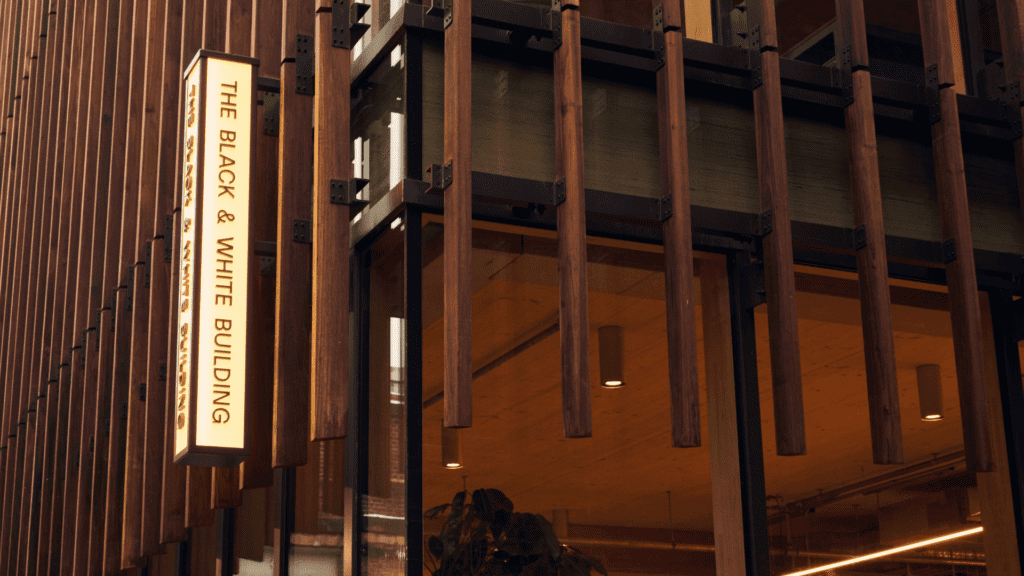Wood Defining Europe’s Cultural Future
With the New European Bauhaus, wood can be the sustainable backbone of skylines of the future.
According to Forbes, European Commission President Ursula von der Leyen is the most powerful woman in the world. How one measures ‘most powerful’ I don’t know, but presumably it involves the assessment that this is someone who can ‘get things done.’
I remember reading a post-premiership interview with Tony Blair in which he recounted finally reaching the role of Prime Minister, only to discover that while there are many levers to pull to get things done, when he pulled them, nothing happened.
The mechanics of the Berlaymont must work better than those at 10 Downing Street because von der Leyen is getting things done. In part by circumnavigating the existing structures, she has developed and implemented her own special project – the New European Bauhaus.
What is the New European Bauhaus?
There was an ‘old’ European Bauhaus or, to be precise, a Bauhaus Movement. The Bauhaus was a school of applied arts established by Walter Gropius in Germany in 1919 and was noted for its refined functionalist approach to architecture and industrial design.
Born in part out of the horrors of the First World War, there was a clear sense of creating utopia as seen in Gropius’s description: “let us strive for, conceive and create the new building of the future that will unite every discipline, architecture and sculpture and painting, and which will one day rise heavenwards from the million hands of craftsmen as a clear symbol of a new belief to come.”
“It’s difficult today to find some corner of design, architecture or the arts that doesn’t bear [the Bauhaus’] traces.”
Charly Wilder
As a movement the Bauhaus was phenomenally successful until the Nazis rose to power and snuffed it out in Germany. However, the vision of the Bauhaus school had permeated into the wider world of architecture.
The style lived on, becoming in the words of Charly Wilder in ‘The New York Times,’ “wildly influential”. She goes on to say, “It’s difficult today to find some corner of design, architecture or the arts that doesn’t bear its traces. The tubular chair, the glass-and-steel office tower, the clean uniformity of contemporary graphic design—so much of what we associate with the word ‘modernism’— has roots in a small German art school that existed for only 14 years.”
Material sustainability
Eighty-six years later, the Bauhaus Movement’s DNA has been extracted and injected in 2020 into von der Leyen’s New European Bauhaus (NEB).
In its own words, the New European Bauhaus is “a creative and interdisciplinary initiative that connects the European Green Deal to our living spaces and experiences.”
The initiative calls on all of us to imagine and build together a sustainable and inclusive future that is beautiful for our eyes, minds, and souls.
Historically, the European Commission has adopted a position of material neutrality, not favoring material X over material Y when it comes to construction. This approach sits comfortably with two of the NEB’s attributes: beauty, which after all is in the eye of the beholder, and inclusiveness. But sustainability? What if material X is indeed more sustainable than material Y?
Wood can certainly make our buildings more sustainable. Using more wood in construction can safely store vast amounts of carbon, which has been removed from the atmosphere through the sequestration ability of trees, via timber used in the built environment.
So in the world of wood, we certainly sat up and took notice on hearing von der Leyen’s first State of the Union address (September 2020) in which she explained how buildings generate 40% of our emissions, and must become “less wasteful, less expensive and more sustainable.”
She went on to set out her vision for a construction sector that can be turned from a carbon source to a carbon sink, “if organic building materials like wood and smart technologies like AI are applied.”
For von der Leyen, the NEB is less of an environmental or economic project and instead more of a new cultural project for Europe. “We need to give our systemic change its own distinct aesthetic – to match style with sustainability.”

In her words, this is why she set up the NEB to be “a co-creation space where architects, artists, students, engineers, [and] designers work together to make that happen.”
From the perspective of the European wood industries, von der Leyen is ‘opening the door’ to an increase in nature-based materials. In response, we created the Wood4Bauhaus Alliance (W4B) with the specific aim of collectively engaging with the NEB.
The New European Bauhaus
Beautiful are the places, practices, and experiences that are:
Enriching, inspired by art and culture, responding to needs beyond functionality.
Sustainable, in harmony with nature, the environment, and our planet.
Inclusive, encouraging a dialogue across cultures, disciplines, genders and ages.
The New European Bauhaus is a creative and interdisciplinary initiative that connects the European Green Deal to our living spaces and experiences.
Source: European Commission
In June 2022, von der Leyen called a major conference ‘Reconstructing the Future for People and Planet – a New European Bauhaus Initiative’ hosted by Pontifical Academy of Sciences in Vatican City, pulling in big names in the battle against climate breakdown, including a representative of W4B.
There she stated that, “sustainably harvested timber can reduce a building’s carbon emissions by up to 60%. Pope Francis is right when he says that humans are not meant to be inundated by cement and steel. Building more with natural elements, like wood, is both good for the planet, and good for the well-being of people.”
Needless to say, the world of wood was delighted to see that von der Leyen had secured the backing of the Pope for her New European Bauhaus, with its strong sustainability message – including more wood in construction.
That said, there is some way to go before the wood-in-construction revolution really takes off. As von der Leyen remarked at Into the Woods in 2022: “Today, 3% of the overall material input in the European construction is timber. So, I would say that it is still a niche, but with a big room for improvement. And the demand is growing fast.”
Professor John Schellnhuber of the Potsdam Institute of Climate Impact Research in Germany is one of the key thinkers behind the NEB. Schellnhuber’s thinking is at the forefront of the argument that an increased use of wood in construction can decarbonize the built environment via substituting wood for materials such as concrete and steel that are together responsible for more than 12% of global carbon emissions. At the same time, using more wood in construction can safely store vast amounts of carbon, which has been removed from the atmosphere via the sequestration ability of trees.
Timber towers
What’s holding back more construction in wood? Technically, we can do it. Engineered timbers, such as cross-laminated timber (CLT), have the structural strength of steel and concrete and their arrival has already enabled the construction of timber skyscrapers.
“3% of the overall material input in the European construction is timber. I would say that it is still a niche, but with a big room for improvement. And demand is growing fast.”
Ursula von der Leyen
One such example is in Austria, which until 2019 held the record for the world’s tallest timber building with their 18-story HoHo Wien building in Vienna, which stands at 85m. Now the Norwegians hold the record with the Mjøstårnet Tower. While having the same number of storeys as the HoHo building, it is 60cm taller.
The record will soon be heading to Australia, where the planning authorities in Perth have been asked to sign off on a colossal 183m wooden tower – taller than ‘The Gherkin’ in London – due for completion in 2025.
Offsetting costs
One factor holding back a profusion of new tall wooden buildings in our cities is cost. However, this may be about to change following a legislative initiative from the European Commission and a proof-of-concept scheme at the University of Washington in the United States.
In November 2022, the European Commission issued a proposal on carbon removals which will be discussed in the European Parliament in 2023. It opens the way to the development of a methodology for measuring carbon stored in wood products in the built environment that in turn will enable this stored carbon to be monetized and sold as carbon offsets. In the future, any long-haul flights you take could be offset by purchasing the carbon stored in the engineered timber, making up some of the components in a wooden skyscraper.

In the United States, Aureus Earth calculated the carbon stored in the new Founders’ Building at the University of Washington. Built from engineered timber, the carbon offsets generated were sold for the sum of $150,000. Such carbon offsets generated from storing carbon in timber in the built environment can be used to generate additional income for timber manufacturers, income which can be used to close the price gap between building with wood or building with carbon-intensive steel and concrete.
But is there enough wood?
In 2022, the Potsdam Institute crunched the numbers and concluded that essentially ‘yes’: we will need to plant more and be highly materially efficient, but it is possible. The study explained that in 2020, forest plantations were only about 4% of global natural forests but accounted for more than a third of industrial roundwood production.
“In the mid to long-term, highly productive plantations could therefore increase wood production while alleviating harvest pressure from natural forests under strict biodiversity and land protection regimes,” the study said.


Without doubt, the NEB is helping facilitate the transition to more wood in construction – a transition that is confirmed by a steady stream of new timber builds such as the Black and White Building, which is London’s tallest wooden office block that opened to glowing reviews.
With its external tulip wood fins, its lift cabin lined with panels of cork and its structural columns and beams made from beech laminated veneer lumber, this is a beautiful building. A building in the style of von der Leyen’s New European Bauhaus – beautiful, inclusive, sustainable. Hopefully one day she’ll get to visit!
The New European Bauhaus
In 2020, the European Commission announced the New European Bauhaus (NEB) to connect a creative dimension to the European Green Deal and demonstrate how sustainability, aesthetic beauty and accessibility can interconnect as the European Union strives for a “greener” and more inclusive continent. The initiative creates a platform for institutions, citizens and professionals in business, science, art and design to collaborate on projects that align with the NEB vision.
President of the European Commission Ursula von der Leyen presented the NEB as being the initiative through which Europeans will “see, feel and experience the European Green Deal,” positioning the movement as being the aesthetic and practical manifestation of the ambitious climate change policy targets.
The NEB offers financial prizes to EU Member State initiatives that champion the NEB’s core tenets of sustainability, beauty and inclusivity. The funding goes to a diverse range of projects that address social, environmental and economic issues.
The 2022 NEB prize winners included Gleis 21, a cooperatively-owned and -operated housing project in Vienna; a sand dune regeneration initiative in Barcelona; and De Korenbloem, a Belgian housing project designed to provide care to people living with various disabilities.
In April 2022, the Commission launched The NEB Lab, a co-creation space that aims to create tangible results that align with NEB goals. The NEB Community and EU institutions create project proposals for the NEB Lab, which then helps ensure projects have the conditions and framework to facilitate a green transition.
